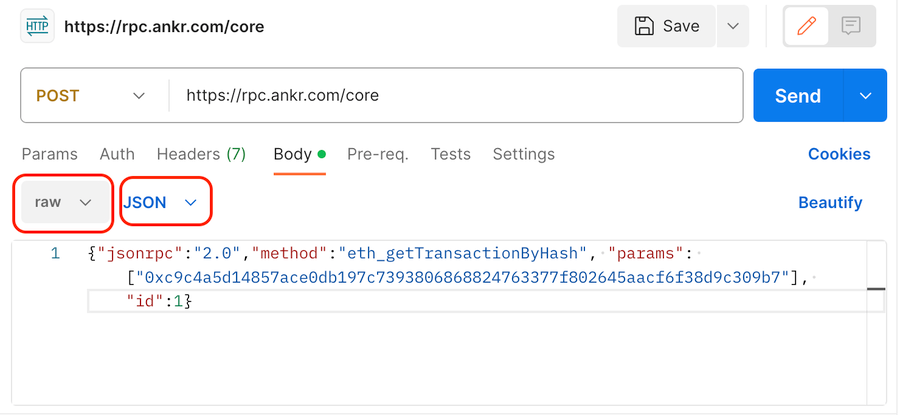Core RPCs Through Postman
What is Postman
Postman is a popular software offering that makes it easy to create and use APIs.
In this document, we'll cover the very basics of hitting an RPC endpoint with Postman. Is it not intended to be (or to replace) a full, end-to-end tutorial, but rather to offer an introduction to the subject.
Working with CORE RPCs Through Postman
- First, you'll need to sign up with an account. Postman makes this very easy to do by manually entering your account details or with a gmail address.

- Projects in Postman are organized into "workspaces", so you'll need to make one to test this process. Click on the New button in the left navigation pane.

- You can choose from a number of different workspaces. For this example, we're going to use
HTTP.

- This will take you to a basic workstation, where you can structure your RPC query and get a response back.

- First, change the
GETrequest to aPOSTrequest, as that's how our query will be structured. Then, add the RPC URL that you want to use to get data related to a specific Core Chain transaction. Remember that you can use any of the valid Core RPC URLs.
- Then, head over to the Body tab and add the data from the following CURL request (note that in this example we are submitting the request as raw json).
curl -H "Content-Type: application/json" \
-X POST \
--data '{"jsonrpc":"2.0","method":"eth_getTransactionByHash","params":["0xc9c4a5d14857ace0db197c7393806868824763377f802645aacf6f38d9c309b7"],"id":1}' \
--url 'https://rpc.ankr.com/core'

- Once the
Sendbutton is hit, you'll get back a response in JSON with all the information we wanted about the transaction whose hash we passed in the request.
